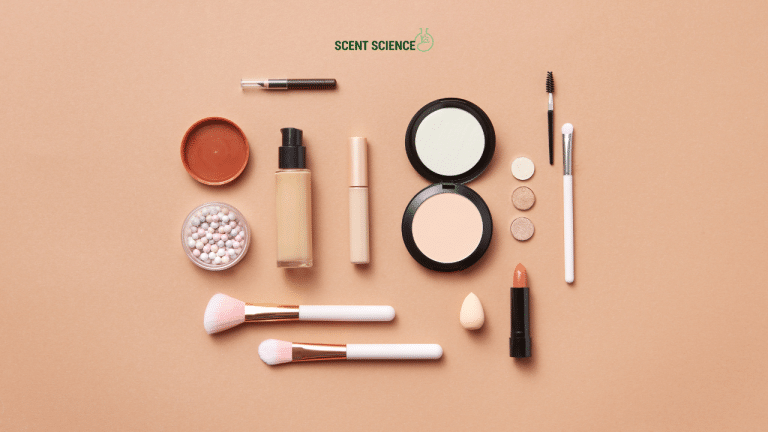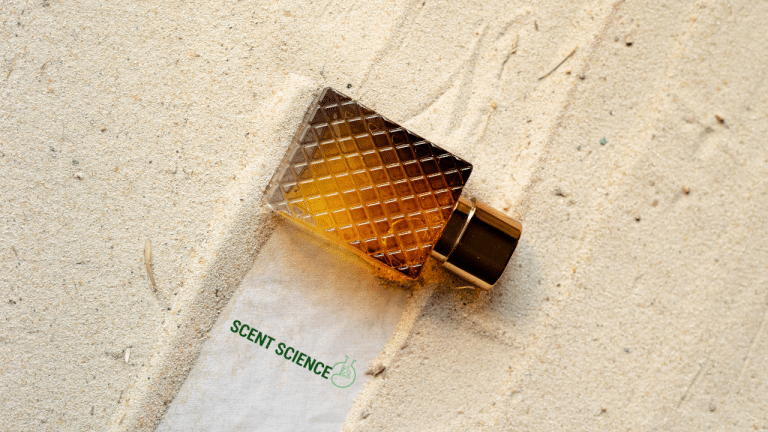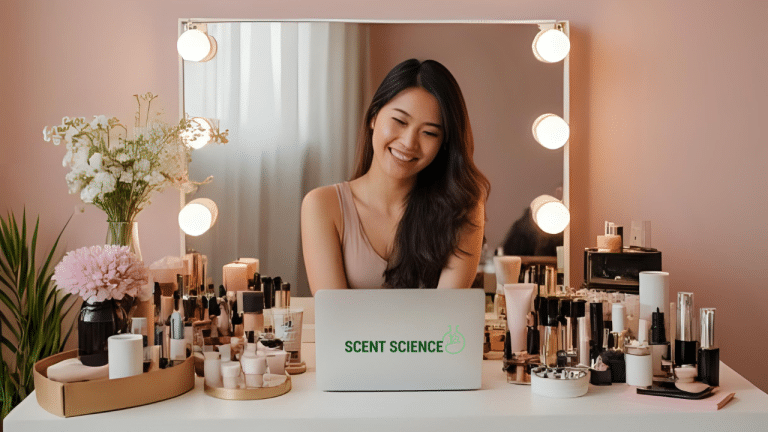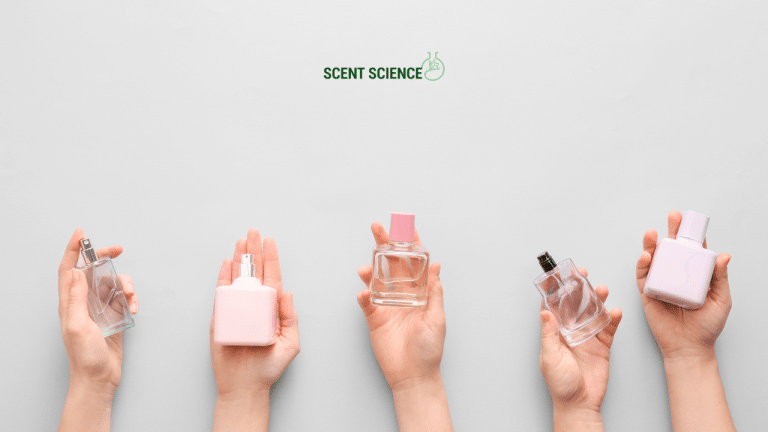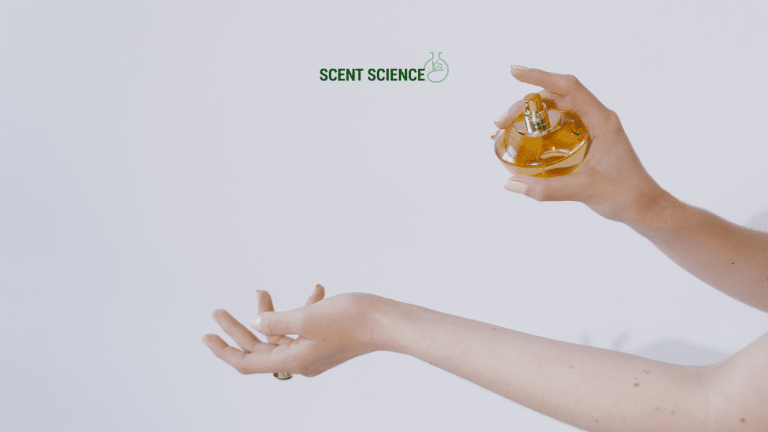Isn’t it funny how a simple whiff can transport you back in time? Picture this: you catch a fleeting scent of freshly baked cookies, and suddenly you’re five years old again in your grandma’s kitchen. It’s almost like magic, right? But there’s real science behind these olfactory trips down memory lane. This journey into “scent memory” is more than a whimsical ride—it’s a bridge between our senses and emotions, rooted deeply in the brain’s structural pathways.
Table of Contents
ToggleUnderstanding Scent Memory
In a world inundated with stimuli, scent often gets overshadowed by sights and sounds. But here’s the thing—our sense of smell is incredibly potent and more intimately linked to memory and emotion than other senses. Let’s dive into why this is the case and how scent memory forms the backbone of our emotional experiences.
The Olfactory Pathway: A Direct Line to Emotion
Our sense of smell begins with the olfactory bulb, a tiny structure in our brain’s limbic system. Here’s the kicker: the limbic system is also renowned for governing emotions and memories. Unlike other senses that make detours through the thalamus, scents hit the limbic system directly. This shortcut explains why a particular fragrance can instantly trigger vivid memories and intense emotional reactions, faster than you can say “rose garden.”
In simpler terms, smells race through a neural expressway, easing past typical bureaucratic processes, making scent memory an immediate and potent force.
The Peculiar Power of Fragrance Psychology
Fragrance psychology explores how smells influence moods and behaviors. Each aroma you encounter stakes a unique spot in your brain’s olfactory world. These fragrances don’t just linger in the nose; they map memories, emotions, and even biases across the brain’s neuronal landscape.
**Here’s a relatable twist:** It’s like each scent has its own private dictionary of personal significance. Just one sniff can decode a story replete with emotional nuances—trust me on this one, scent is utterly, unpredictably powerful.

The Anatomy of a Scent Memory: Step-by-step
I find it fascinating to chart how a scent etches itself into our memory. Here’s a simplified walk-through of this compelling process:
- Scent Detection: You inhale a scent. The molecules we breathe in spring from various sources, whether flowers, perfumes, or foods.
- Signal Transmission: These scent molecules attach to receptors, transforming into electrical signals zipping straight to the olfactory bulb.
- Emotional Tagging: The olfactory bulb broadcasts signals to the limbic areas, like the amygdala and hippocampus—centers cognizant of emotion and memory. Emotional tags lock onto the scent, associating it with specific feelings or events.
- Memory Storage: Over time, an intricate web of memories weaves around this particular aroma, supported by experiences or emotions at its first encounter.
- 5. **Recall and Relive: Encounter the scent again, and voilà! The stored experiences unravel, fusing past emotions into your current moment.
Why Do We Remember Scent Memories So Strongly?
Sure, sounds, and visuals seek refuge in our memory. But scent, quite astonishingly, imprints itself onto our brains with remarkable tenacity. Here’s why: **Scent evokes much more textured and nuanced flashbacks compared to other senses**. The reason is simple—when signals skip the thalamus pitstop, they etch themselves more deeply, blending emotion, context, and sensation promptly.
The Power of Scent in Different Contexts
We encounter innumerable fragrances in life, but where do they leave the most mark?

Scent in Our Personal Lives
In daily living, scent composes a recurring symphony. Think about soft cotton, red earth after rain, or playful puppy fur. Each emerges as symbols of comfort, warmth, or nostalgia. Here’s a friendly invite: recall a handle of scents that distinctly embody moments personal to you. Realize how they transcend the past into your present scent memory.
**Scent Tip**: For enhancing positivity, choose fragrances you relate positively with. Integrate this thoughtful choice into personal spaces, ensuring familiarity and elation intertwine with every breath.
Scent in Industry and Marketing
From marketing ploys to ambiance creation in public spaces, scent capitalizes on potent psychological levers. Amusingly, companies deploy signature scents, forging brand loyalty into scent memory—from fresh in-store atmospheres to zingy car interiors. Ever accidentally bought from a store purely because of how comfortable it felt? That’s fragrance psychology at work.
Scent in Therapy and Well-being
Aromatherapy rarely inconspicuous, has practitioners harnessing scent for both relaxation and restoration. Here’s a small truth: our scented allies—lavender, vanilla, eucalyptus—may effectively transform moods and ameliorate stress. Remember how scent intricately weaves well-being into our lives, adding serene tones to everyday burdens.
Practical Ways to Harness the Power of Scent Memory
Sure, understanding scent memory is insightful, but how about we get practical? Here’s how to harness this gift and maximize well-being and productivity:
- Choose Signature Scents: Assign scents to specific activities for improved focus or relaxation. Want to boost creativity? Try citrus or peppermint before beginning a new project. Want to feel calm after a long day? Lavender’s your go-to.
- Create Aromatic Anchors: Attach particular fragrances to key life events. Spritz a unique perfume for milestone activities. Years later, though life may have whisked you elsewhere, one sniff reinstates past triumphs with buoyancy still vivid.
- Adopt Aromatherapy: Experiment with essential oils or diffusers. Start simple. Explore scents scientifically recognized to relax or invigorate and observe which positively interact with your system.
- Preserve Memory with Scented Keepsakes: Infuse personal items—letters, clothes, trinkets—with signature scents. Consider, for instance, tucking a fragrance sachet into a cherished keepsake box to preserve memories of a significant time or person.
- 5. **Engage in Smell Training: Occasionally practice smelling and identifying various fragrances to resharpen your sense. It’s beneficial not just for memory reinforcement but for maintaining healthy olfaction as we march through age.
Modern Research Insights

The atmospheric cloud of research unraveled by scientists matches the profundity of understanding garnered from everyday uses. Inclusive studies stretch across imaginative landscapes—whether the use of scents affecting sleep quality, bolstering immune system responses, or helping trigger forgotten memories captured by neuropsychological conditions. A burgeoning field fosters actively exploring fragrance within health and psychological exploits—a thread you’ll find worth trailing, as it buffers past discoveries and plunges into future revelations!
For Curious Minds—Try This Thought Experiment!
Catch yourself a weekend and conjure this easy, exhilarating challenge. Close your eyes and record sensations when exposing to must-have scents, cataloging immense details rang in those curious minds. Get candid! Give this practice a go because contrasting emotions amplifies as raw fragrance seeps through imagination vigorously teased alive.
Reflecting on the Profound and Personal Bonds with Scent
We commenced strolling alongside grandma’s sweets, skirted sentiment evoked through olfactory impressions, sidestepped captivating realms within economics, therapy, and revitalization. Somewhere round these literary corners, we found visual marvels re-enacted unbeknown through avaliable Proustian recall initiatives: a gift retreated within essence, dwelling intimately alongside cognoscente interpretation.
Our curiosity weaves profound and mystical connections within literature and science—a detail where candid interchange flares about the discreet necessity upon relying on invisible wonders so definitive to elapsed empiricism understating olfactory interests.
**So, what’s left to say? Maybe, just to enjoy each pleasant sniff, joyful memory, and fascinating story becoming more than transient whispers—from fleeting routes, echoes narrate life generously passed anyone bold enough to inhabit intense blues derived instantaneously forgone drifts. Delight in forthcoming respites dear reader, and scribe individual footnotes where an olfactory trail hints reams uncharted afore—you’ll find they linger longer in perceptions close by.**
Frequently Asked Questions
How often should I wash my face mask to prevent maskne?
To prevent maskne, it is crucial to wash your face mask regularly. For fabric masks, wash them after every use, similar to how you would wash your underwear[2][3][4]. Disposable masks should be tossed after each use to prevent the buildup of bacteria and other contaminants[3][5>.
What type of skincare products are best for preventing maskne?
For preventing maskne, use skincare products that are oil-free or noncomedogenic. These products, such as gentle cleansers, moisturizers, and sunscreens, help prevent clogged pores and reduce the risk of acne. Look for products containing salicylic acid or benzoyl peroxide for their acne-fighting properties[1][3][4>.
How can I reduce friction and irritation caused by wearing a face mask?
To reduce friction and irritation, choose a mask that fits well and is made from breathable fabrics like cotton or bamboo. Loosen the mask straps, use pads under the straps, or consider a headband-style mask to minimize friction. Taking brief breaks to remove the mask and allow your skin to breathe can also help[2][3][5>.
What are some additional tips to prevent maskne while wearing a face mask?
In addition to regular mask washing and using the right skincare products, avoid touching your face, skip makeup or use noncomedogenic makeup, and moisturize your skin to keep it hydrated. Also, limit the use of active ingredients like retinol or benzoyl peroxide during the day when wearing a mask, and consider using a topical antimicrobial cream to prevent bacterial buildup[1][3][4>.
References


